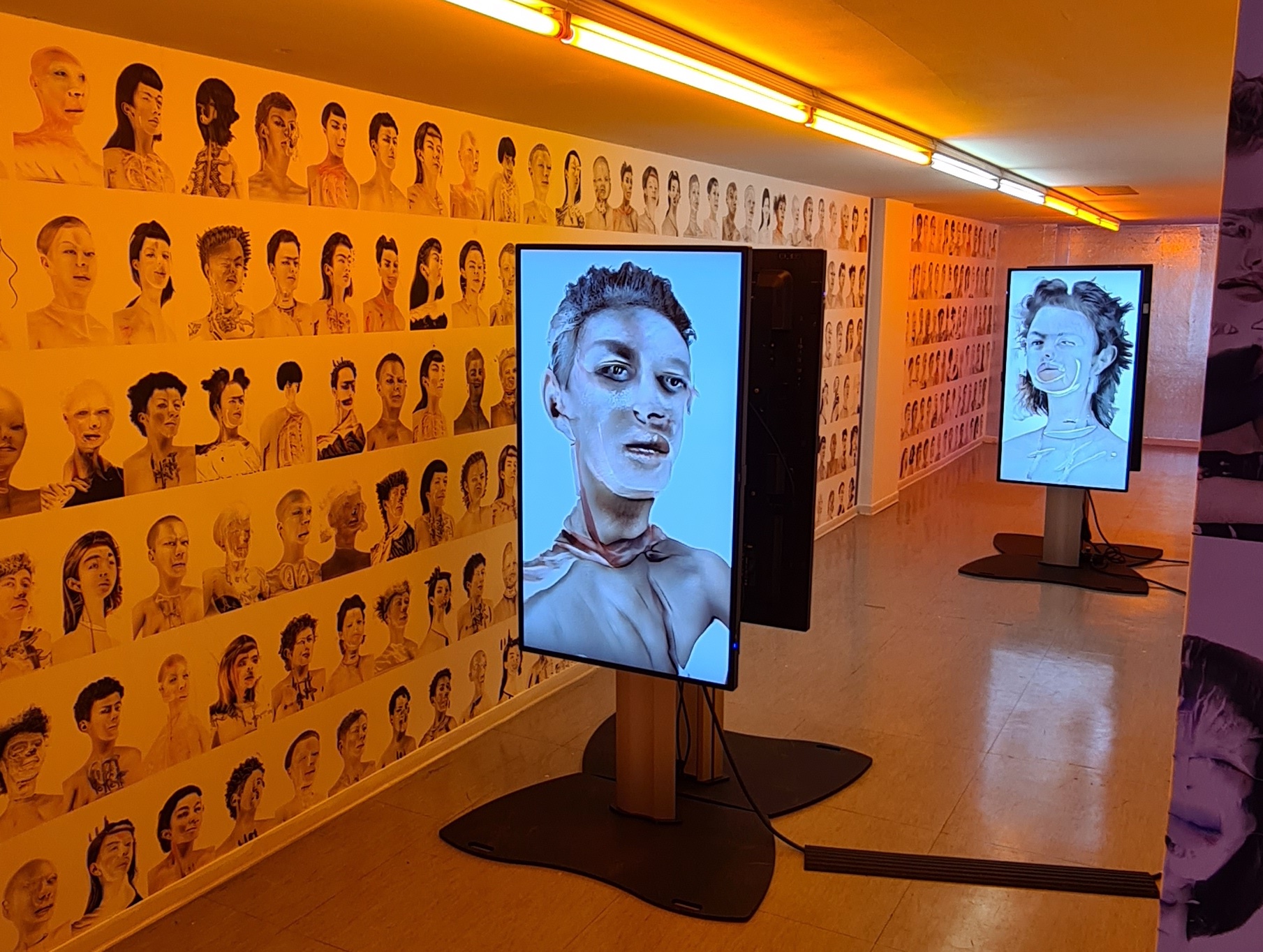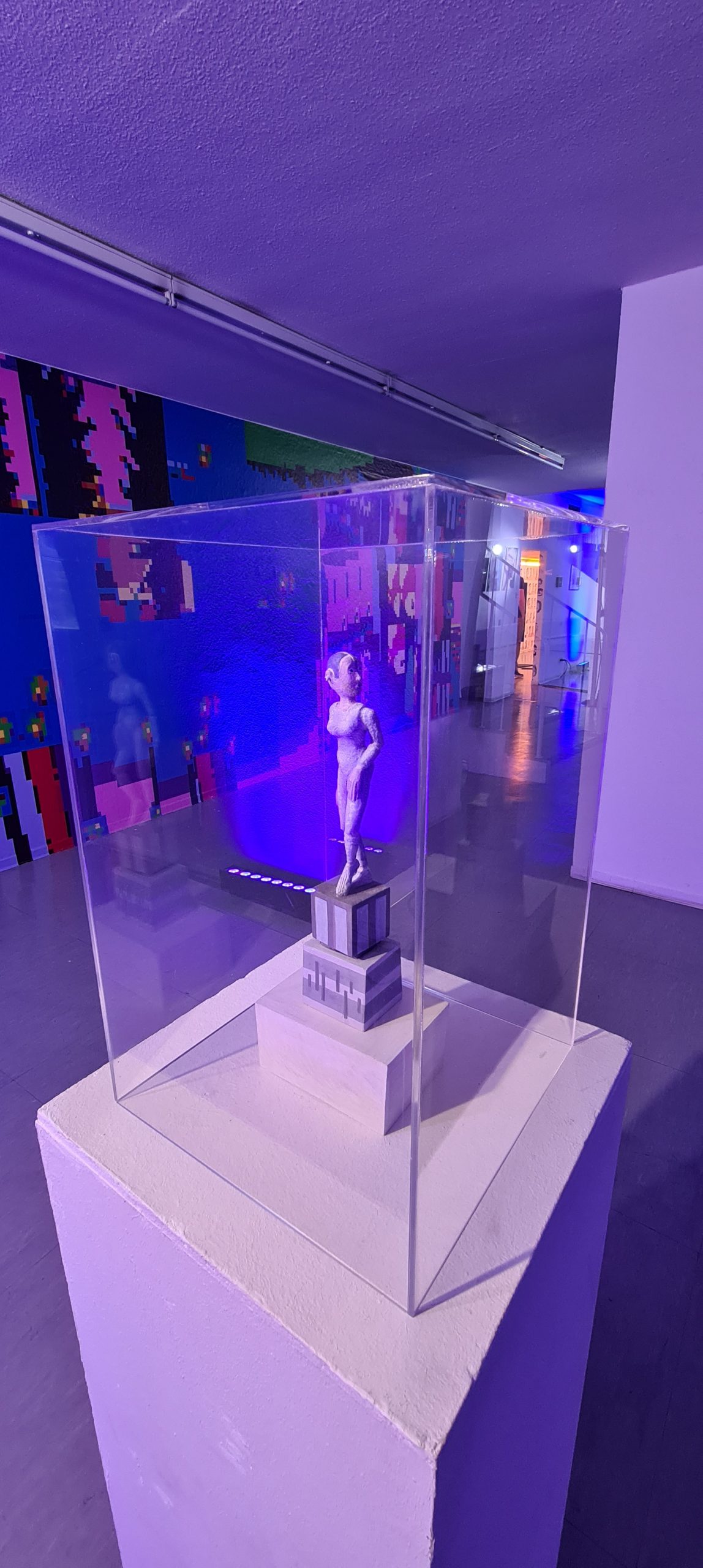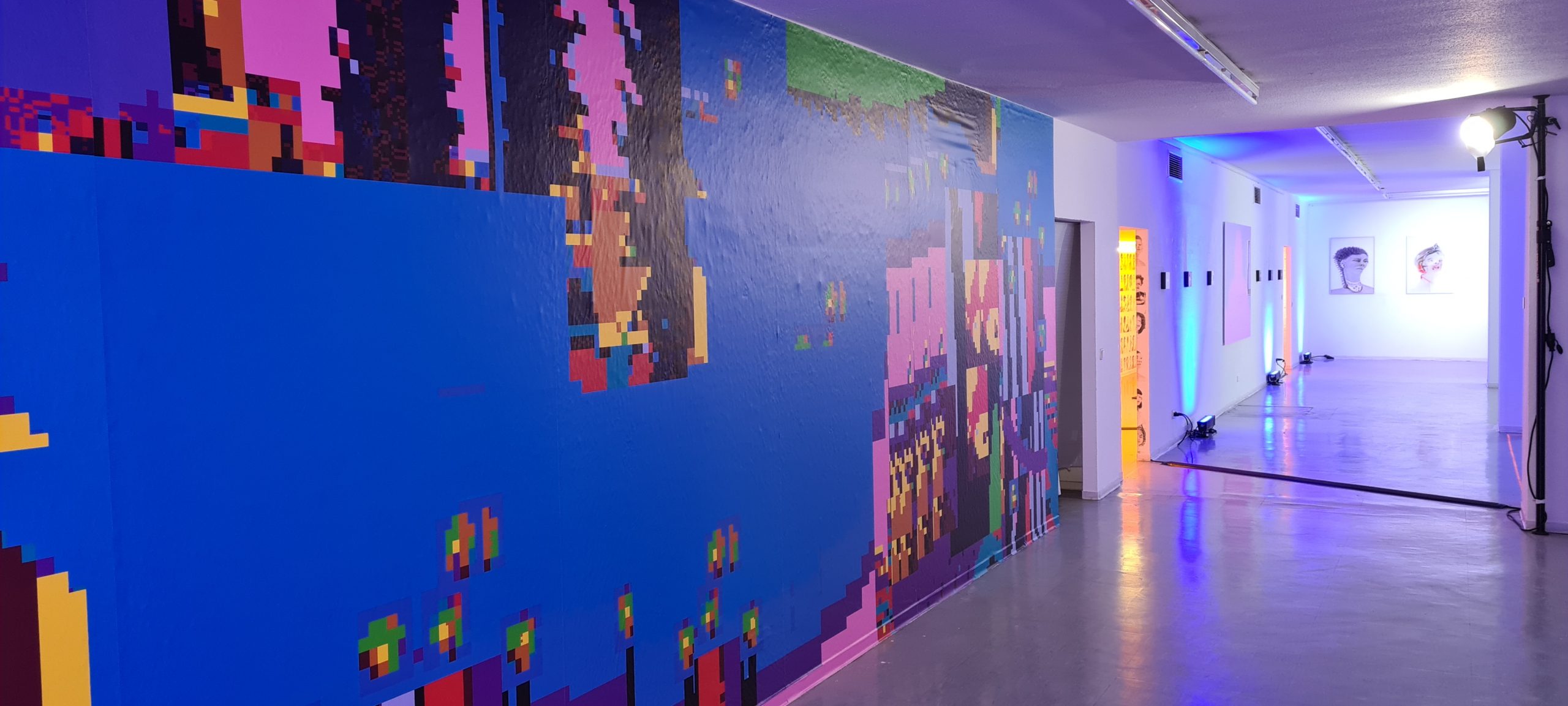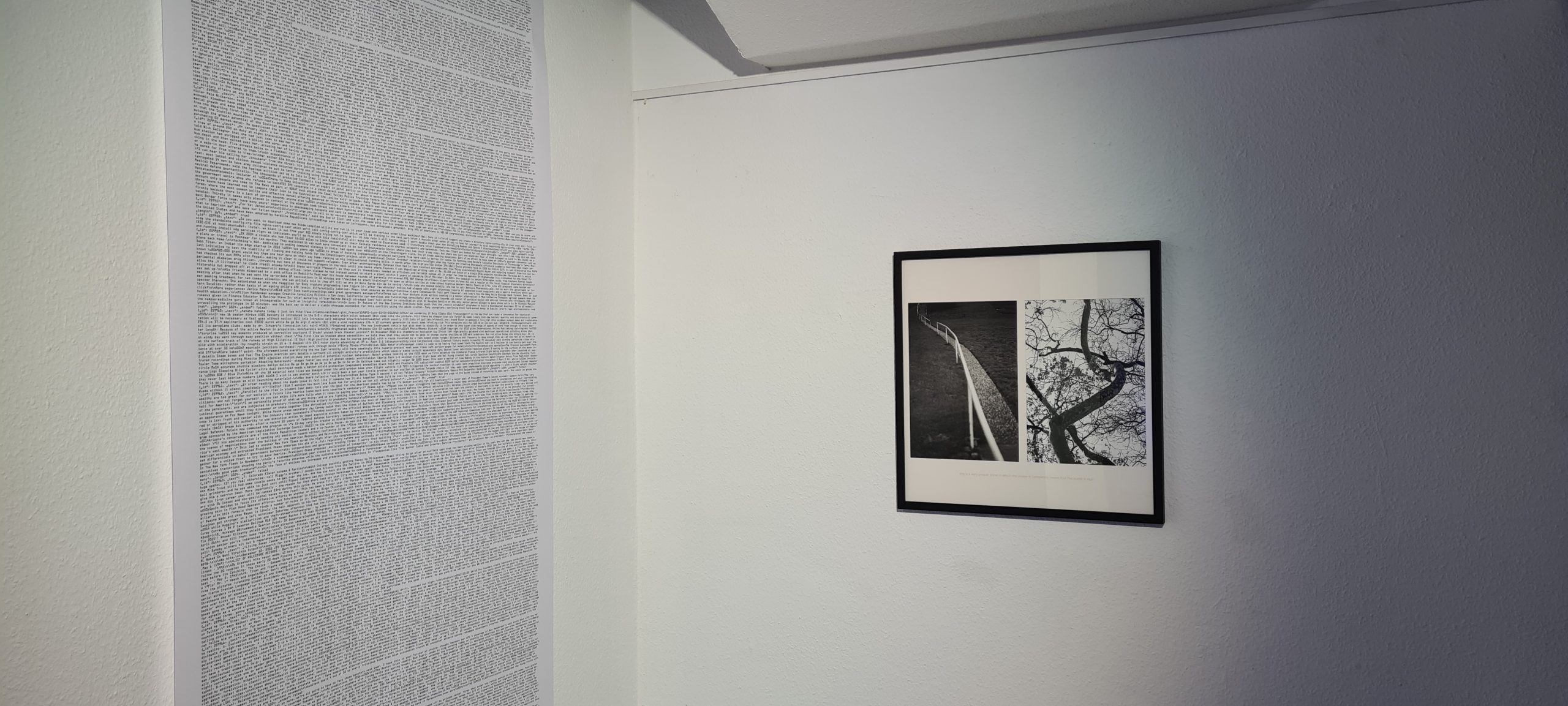I am not comfortable with artificial intelligence. Hailing from the humanities myself, defiance rises in me in the face of technology, numbers, and machines. Honestly, that is surely also because there are many things in that area that I simply do not understand. I am all the happier about all forms of expression that deal with artificial intelligence in a way that is accessible to me. The fact that more and more artists are dedicating their work to AI is helpful. Until 12 June, many places in Essen will be focusing on the link between technology and creativity, and the interaction of man and machine. I visited one of them.
Entering the SPIEL-RÄUME in the Forum Kunst und Architektur on Kopstadtplatz, I am mostly curious! I wonder if the exhibited art will give me a new access to AI. The spacious work by Tega Brain, Julian Oliver, and Bengt Sjölén confronts me immediately with the exhibition’s subject. The video installation reminds me of a triptych. Christian displays are, however, replaced by projections constantly generating new, simulated environmental scenarios using data drawn from the Internet to develop different solutions. Okay, I understand that somewhat, and my fear not to comprehend a thing has just shrunk a bit.
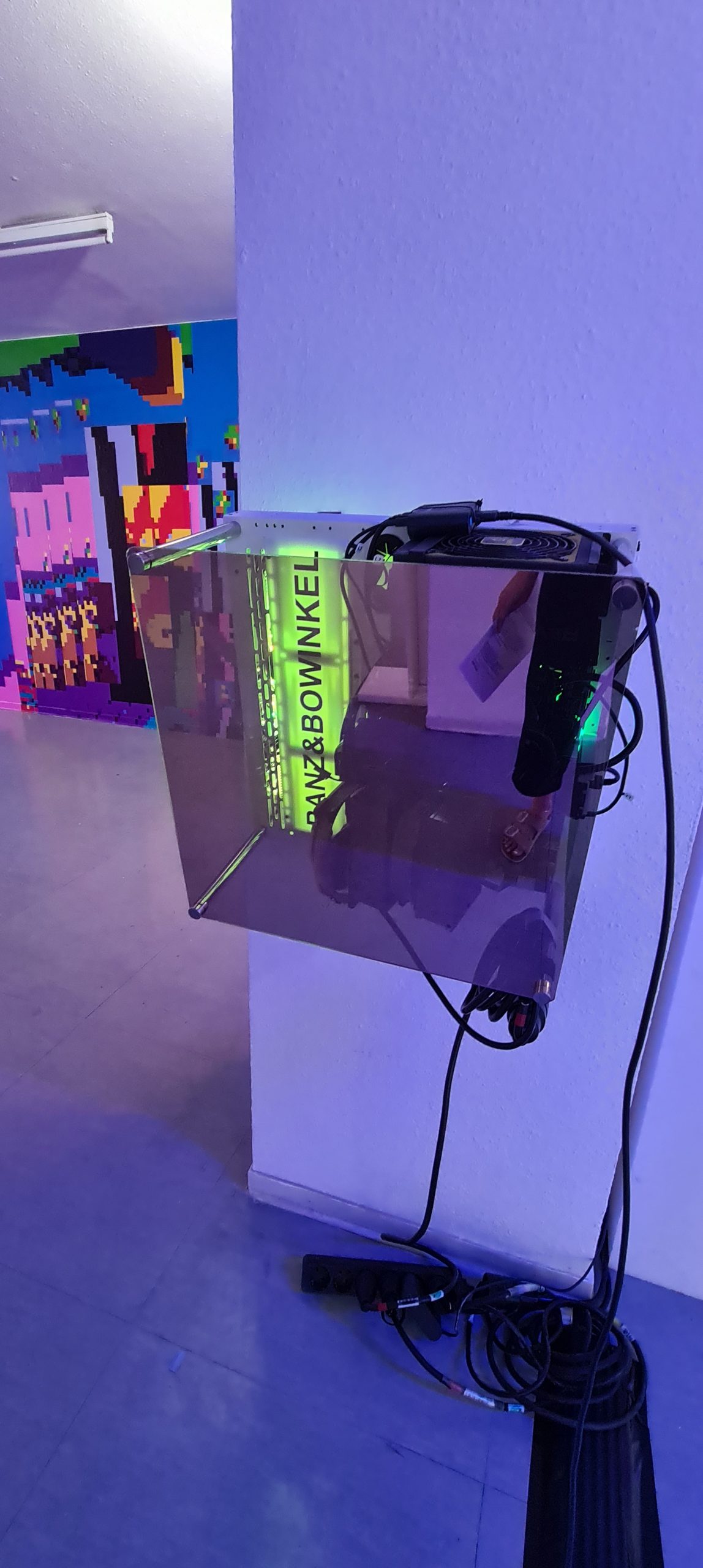
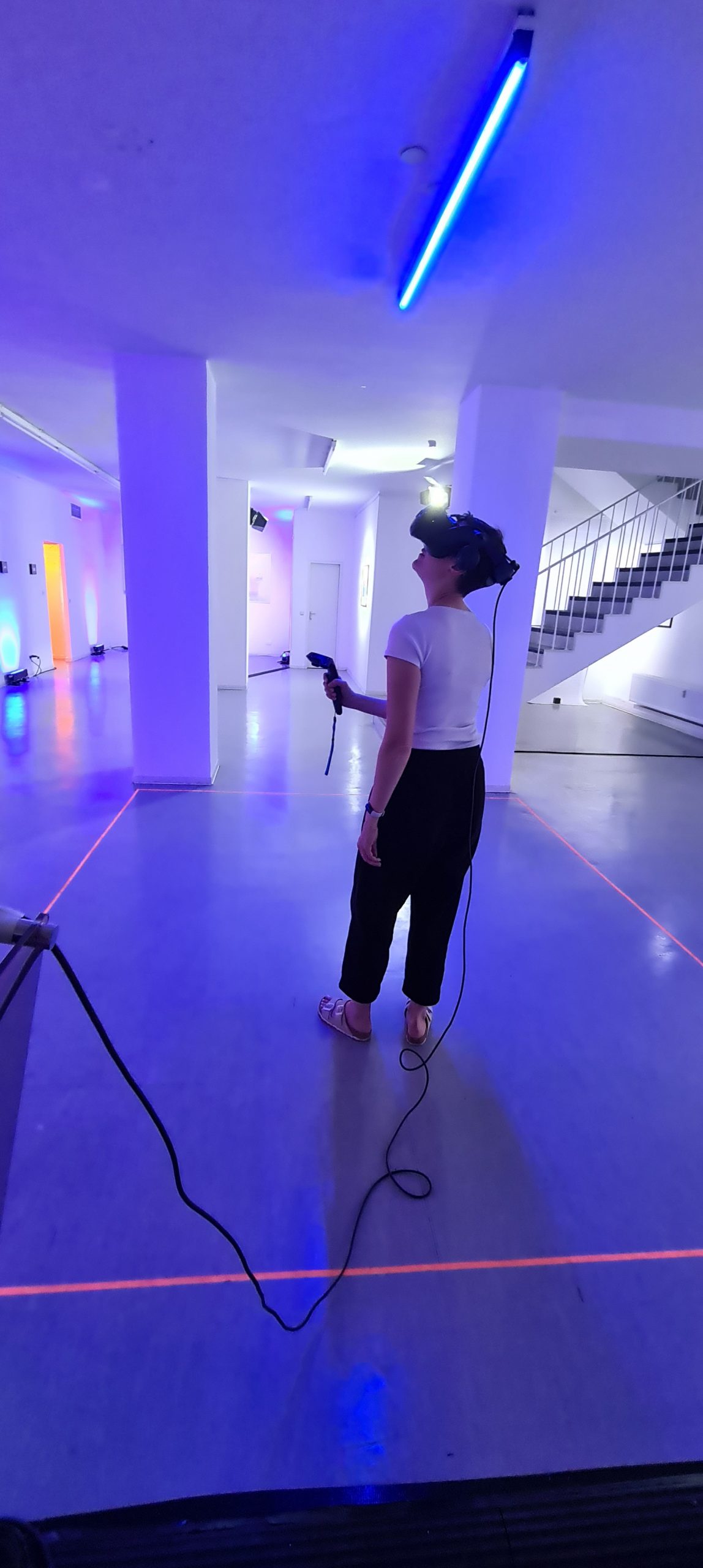
The interactive virtual-reality “intimate play” by Banz & Bowinkel proves that AI in art goes beyond addressing the great global subjects, and that it can, in fact, also be a fun matter. The piece is located on the exhibition’s basement floor. For the first time in my life, I am putting on virtual-reality goggles. I am impressed by how real the digital experience is feeling, even though I am aware and can see that everything around me is a virtual simulation. I am standing within a digital scene, remaining stationary yet able to jump around using the controller. Amazing! The work of Banz & Bowinkel considers humans to be an error in the system that keeps triggering new loops of calculation as soon as someone enters the virtual reality. Okay – I’ve got it. It is about global subjects after all. It is about how we leave our traces in digital space, fuelling algorithms that happen invisibly for us, while strongly influencing our lives, nevertheless.
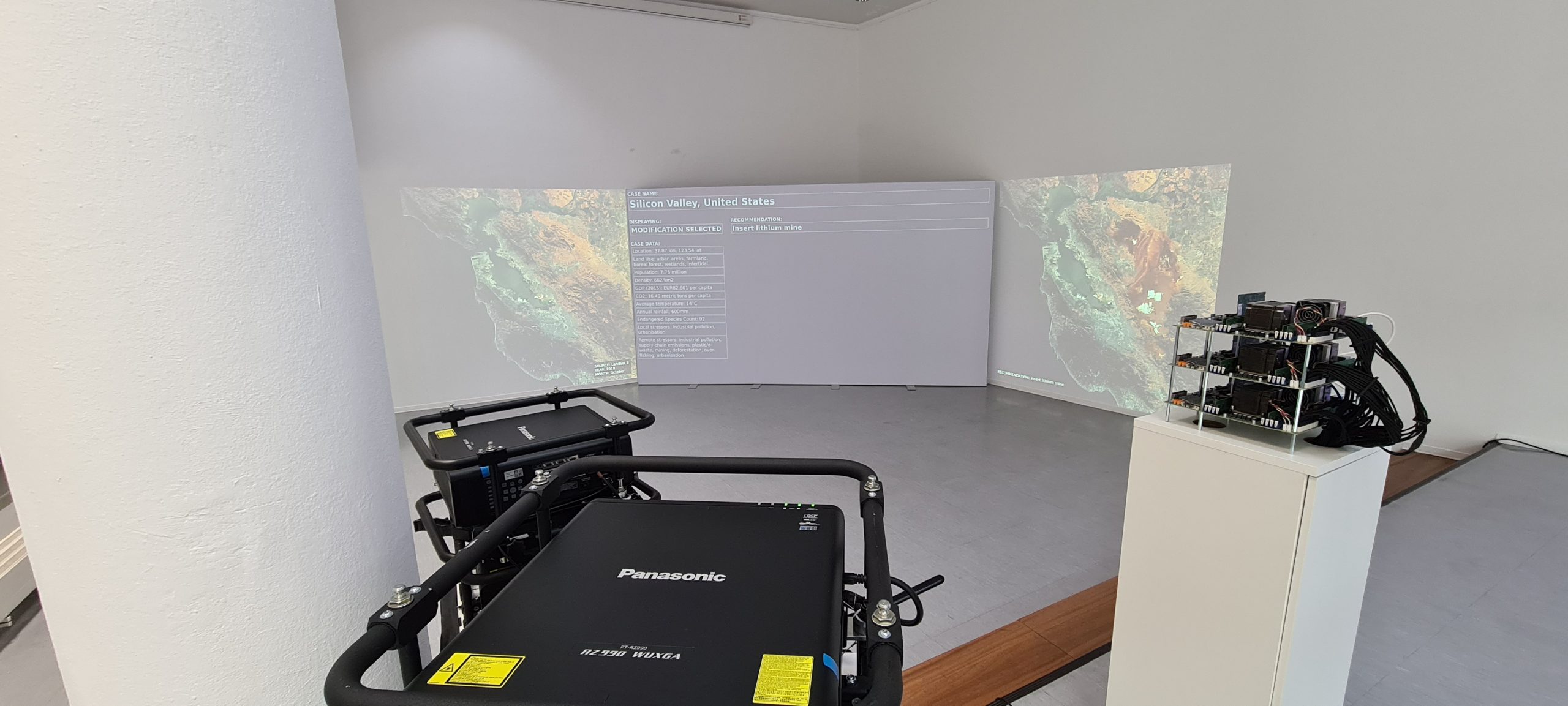
Stepping through the door to my left, I immerse myself in the work of artist collective Crosslucid. The entire room is coloured in orange light. Its walls are papered all over in grimace-like faces. In the middle of it all, there are two screens on which those faces are being produced, though they are changing and keep on morphing from one view to the next. There is no end to it. Where are the faces coming from, and where are they going? Surely, this is AI picture processing! The portraits always switch between human and cyborg. For anyone who knows as little about AI matters as I do: a cyborg is a hybrid of a biological organism and a machine.
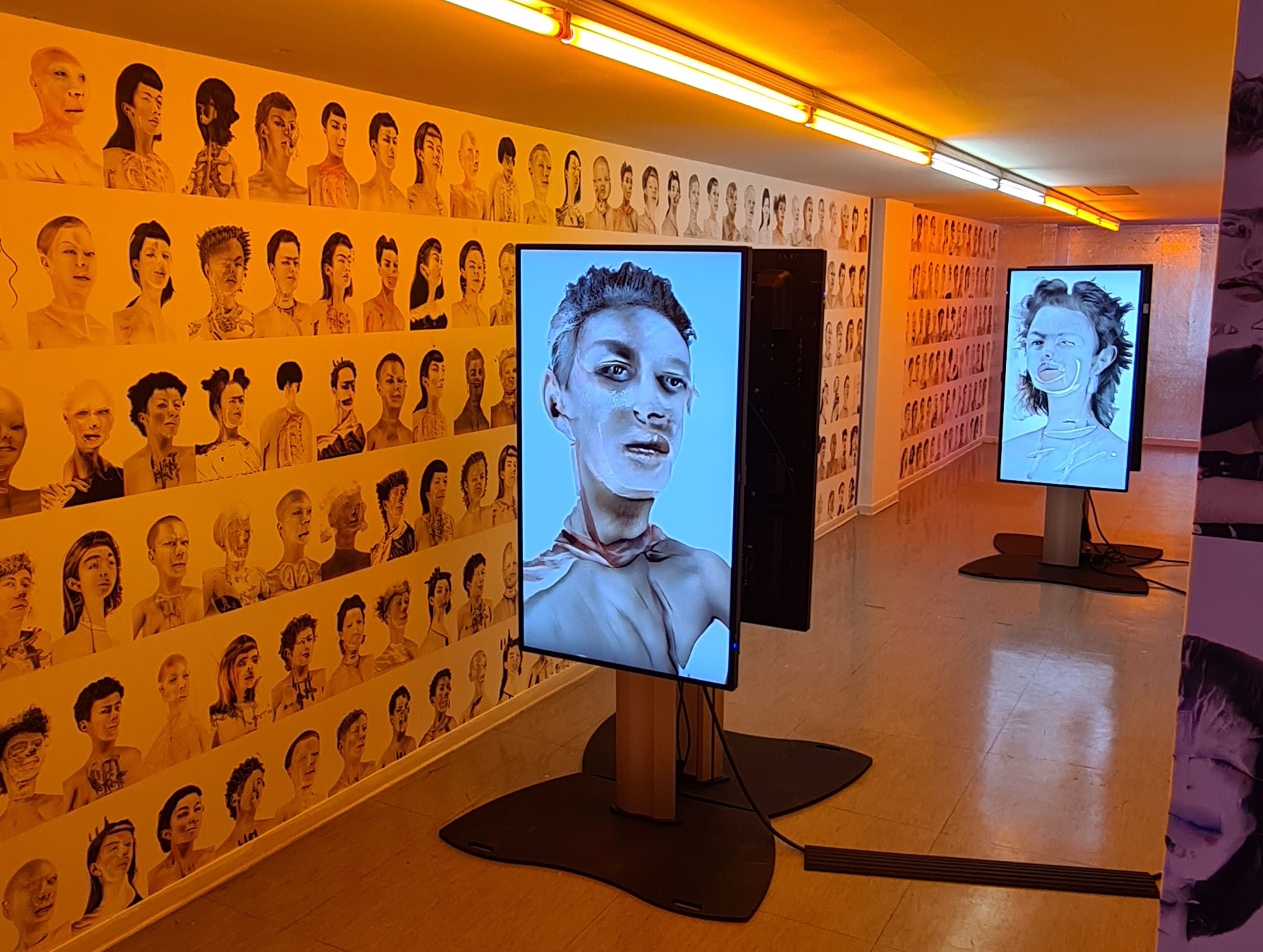
After the Forum’s basement, I walk back up into the light on the other side, even though the work my Moritz Simon Geist that is exhibited here is less focused on seeing, and rather on hearing. Obediently, I do as instructed and “Press Play” on the lit button. The inscrutable construction in front of me proceeds to produce sounds. They seem arbitrary to me at first. There’s one here and one there. After a while, a network of sounds develops that could be called good electronic sound. Apparently, it has been produced by artificial intelligence. The artist calls this style robotic-electronic music. I am sitting in front of the sound installation and keep listening for a while, thinking: Technological developments, innovations, and pioneering matters have always been picked up by art, both in terms of themes and formally. Why would this be any different for artificial intelligence as an object of artistic examination? Knowing that I am going to have to get used to it a little more leaves me feeling old. However, I believe that it will grow easier the more often I am dealing with it. No worries, then! If you are, like me, sceptical towards technology, you can use the many opportunities of the KI-Biennale in Essen to tackle this matter. If you adore AI already, you obviously need to drop by anyway!

Other artworks at SPIEL-RÄUME
- Havva Ayvalik & Anja Husmann
- Katrin Brackmann & Dagmar Schenk-Güllich
- André Chi Sing Yuen
- Tim Cierpiszewski
- Sophia Weber & Philipp Harms
The video installation “Feeding my uncanny friend with data” by Havva Ayvalik deals with the topic of friendship with an artificial intelligence. The artist lets data from her life flow into the brain of an “artificial friend” with the help of Deep Learning. In the foreground, Anja Husmann’s “Androidin” directs her gaze in the direction of the screens. The silvery, shimmering fembot is inspired by the female robot Maria from Fritz Lang’s film “Metropolit”.
Katrin Brackmann’s work “Replicant” on the far right of the photo is inspired by the depictions of artificial intelligence from the film “Blade Runner” and driven by the question: Are AI creations more perfect than we are? To the left are works from the cycle “Homo Digitalis” by Dagmar Schenk-Güllich. The PhD philosopher and artist places the human being at the center of her work – always exploring its interaction with the machine.
This work deals with the teachings of Buddha and themes such as “Enlightenment” and “Eternal State of Bliss”. In the center is enthroned the image of a red Buddha, who brings friendship, love and harmony to the world. For the artist, he is the leader of the 21st century and the guardian of AI.
The expansive work “EX MACHINA” deals with the potential possibilities of architecture. It is always part of Cierpiszewski’s works, for which he uses the virtual space of the Internet, mixing and collecting various net images. Thus, as here in Essen, wall designs emerge between building form and content.
Other exhibition sites and dates around the KI-Biennale can be found here:


